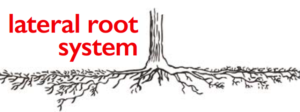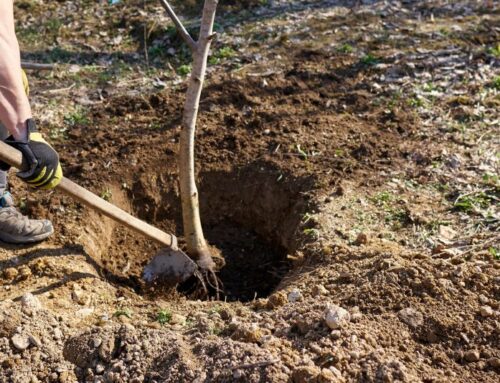We’re familiar with what a tree looks like aboveground, but the underground part of a tree is just as important. The roots are often the “root” of tree health, failure, and longevity. Urban tree roots are highly influenced by the urban environment, which often consists of compacted, small soil volumes. But tree roots can also be partially determined by genetics. Understanding the 3 types of root systems trees have can help you take care of your tree or select the best tree for your property!
Tree Roots
Before we dive into root systems, it helps to know the 5 basic types of tree roots and their function. These are the most common root types in temperate climate trees.

- Tap roots: Every tree starts with a tap root that provides stability and absorption. Over time, other roots outgrow the taproot. Most taproots don’t continue to grow ever more deeply because deep soils lack the oxygen and nutrients that roots need to survive.
- Lateral roots: Lateral roots grow outwards right under the soil surface. They absorb a lot of water and nutrients as well as anchoring the tree.
- Oblique/heart roots: Oblique roots, also known as heart roots, grow at a diagonal and have the same function as lateral roots.
- Sinker roots: Sinker roots grow downwards from the lateral roots to a depth of several feet. There, lateral roots take advantage of any water and nutrients deeper in the soil in addition to increasing tree stability.
- Fine roots: All the root types aforesaid can give rise to fine roots, which is where water and nutrients are directly absorbed. They also house mycorrhizae, which are fungal partnerships that increase root absorption capacity.
3 Types of Root Systems
Each root system below is defined or dominated by one root type, hence their names. Some tree species are more likely to have one root system than another, but keep in mind that site conditions are just as important. Most urban trees have lateral root systems due to shallow topsoil layers and frequent, shallow irrigation.
Taproot System
Dominated By: Tap root.
Stability: Tap root systems are very stable, but extremely rare in mature trees.
Common Species: Some oaks and pines, hickory, sweet gum, tupelo, walnut.
Lateral Root System
Dominated By: Lateral roots.
Stability: Lateral root systems obtain their stability from tree weight and root spread. These root systems don’t necessarily have a lot of root mass, but because the roots are so widespread, the tree can be supported without investing so much in roots. About 80% of tree species and most urban trees have lateral root systems.
Common Species: Ash, birch, cottonwood, hackberry, maple.
Heart (aka Oblique) Root System
Dominated By: Heart (aka oblique) roots.
Stability: Heart root systems obtain their stability from root ball weight and soil resistance. The tree is held up by the weight of its root ball counteracting the weight of its aboveground parts and the strength of the soil around it. Heart root systems are prone to failure in wet soils. Once the soil is wet, wind and gravity can make the tree rotate in the ground, much like a ball-and-socket joint.
Common Species: Honey locust, red oak, sycamore. More common in Mediterranean and arid climates.








